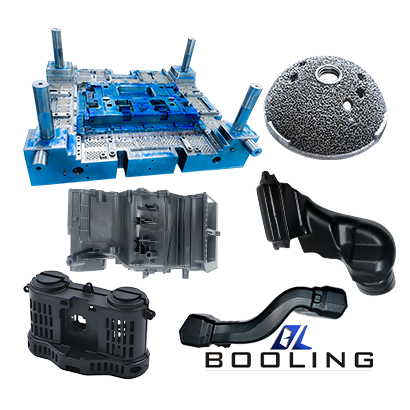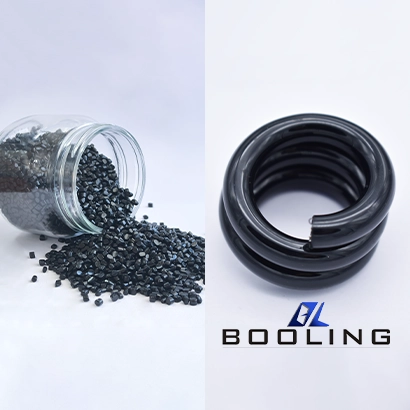Home > Injection Molding > Liquid Silicone Injection Molding
Booling’s liquid silicone injection molding can achieve product production without waste nozzles, helping manufacturers in the infant, medical, electronics, and other industries to improve product qualification rates. The parts produced are safer and more environmentally friendly, and can fully meet food and medical grades. We use the most advanced precision grinders, EDM, boring, CNC machine tools, and other processing technologies to deliver multiple sets of high-quality silicone injection molds for manufacturing plants in the United States, Canada, Mexico, Brazil, Argentina, and other countries.
Using the thrust of the screw or plunger, the pre-treated liquid silicone is injected into the closed mold cavity for curing and molding, and the silicone parts are obtained after cooling. Booling can provide single-cavity or multi-cavity injection molds to achieve the processing and manufacturing of products with different demand volumes.
Types of Liquid Silicone Resin Molding Molds:
- Two plate mold
- Plate
- Injection mold with lateral
- parting and core pulling mechanism
- Injection mold with movable inserts
- Automatic thread removal injection mold
- Hot runner injection mold
Liquid Silicone Injection Molding Capabilities
Liquid silicone injection molding has strong molding capabilities and can produce silicone products with strict tolerances. It is a precision manufacturing process.
·
US
Metric
Silicone
59 in. x 51.2 in. x 17.7 in.
1500mm x 1300mm x 450mm
*Liquid silicone resin provides strict tolerances and excellent sealing performance.
Liquid Silicone Injection Molding Material
Liquid silicone is composed of two components. Component A (liquid silicone) and component B (catalyst, etc.) are accurately mixed at a ratio of 1:1 to ensure the best molding effect. Booling is equipped with precision mixing equipment to ensure full mixing.
Material
- Liquid Silicone
The Advantage of Liquid Silicone Injection Molding
Liquid silicone injection molding technology has unique advantages over traditional material injection molding.
- High molding efficiency, no mixing and pre-molding steps required
- Rapid curing and vulcanization reaction
- Liquid silicone material has excellent elongation, high tensile strength, stability, and fluidity, and is easy to process
- It is elastic and can withstand greater pressure without deformation
- It has good biocompatibility
Application of Liquid Silicone Injection Molding
Liquid silicone injection molding technology has high fluidity and can achieve rapid vulcanization, making it an ideal choice for processing in the fields of automotive parts, aerospace, electronics, medical, and food packaging.
Guidelines for Liquid Silicone Injection Molding
Booling provides liquid silicone injection molding mold manufacturing and product customization with high design flexibility.
Liquid silicone injection molding products have excellent insulation and elasticity and can withstand large impact forces. Unlike traditional plastic materials, liquid silicone can withstand more extreme temperatures and is suitable for product processing that is exposed to UV light for a long time.
Liquid Silicone Injection Molding Material Characteristics
For silicone materials, different properties exist in different forms. Booling provides silicone processing in both solid and liquid forms.
- Liquid Silicone
Liquid silicone is a low-viscosity, castable material with easy processing characteristics. By mixing liquid silicone with a crosslinker and a catalyst, the liquid silicone mixed material is injected into the heated mold cavity using the injection molding machine head, and after curing, a part with excellent surface finish and dimensional accuracy is formed. The product is produced without sprues and flash, reducing labor costs.
Liquid silicone has good fluidity and low viscosity, can fit every detail of the mold cavity, evenly reaches every corner of the mold, and avoids defects such as short shots and bubbles. Liquid silicone injection molding can create thin-walled parts and complex details, with excellent transparency and clarity, and is used in the development of optical and medical devices.
- Solid Silicone
Solid silicone does not flow and can maintain its original shape and structural integrity under extreme temperature conditions. Booling provides sheet, rod, and custom-shaped solid rubber processing with excellent tear and wear resistance. Capable of producing mechanical parts with a high degree of consistency.
Application of Liquid Silicone Injection Molding
Liquid silicone injection molding has good elasticity, transparency, and clarity, and is chosen by manufacturers in various industries.
- In the medical field, silicone injection molding technology can be used to process medical pipes, surgical instruments, and implants. Silicone itself has good biocompatibility, which can ensure the safety of patients and improve the reliability of medical equipment.
- Liquid silicone injection molding technology can produce high-performance parts in automobiles, such as silicone gaskets and some seals, as well as rubber strips on door panels, to improve the shock absorption and noise reduction performance of automobiles and achieve driving comfort.
- Components in consumer electronic products need to have both durability and shock absorption to realize the manufacture of product shells and protective covers for smartphones, computers, tablets, watches, in-ear headphones, etc. Using injection molding technology, Booling can process complex patterns on the surface of products
- Aerospace: Liquid silicone materials can withstand extreme temperatures and are suitable for processing aircraft and spacecraft interiors and sealing parts. Using injection molding technology, excellent processing accuracy can be achieved
Liquid silicone injection molding technology has significant advantages, a short molding cycle, and a high degree of automation. Booling has provided efficient injection molding solutions for Spain, India, South Korea, Russia, Argentina, and other countries, providing rapid molding of silicone parts.


